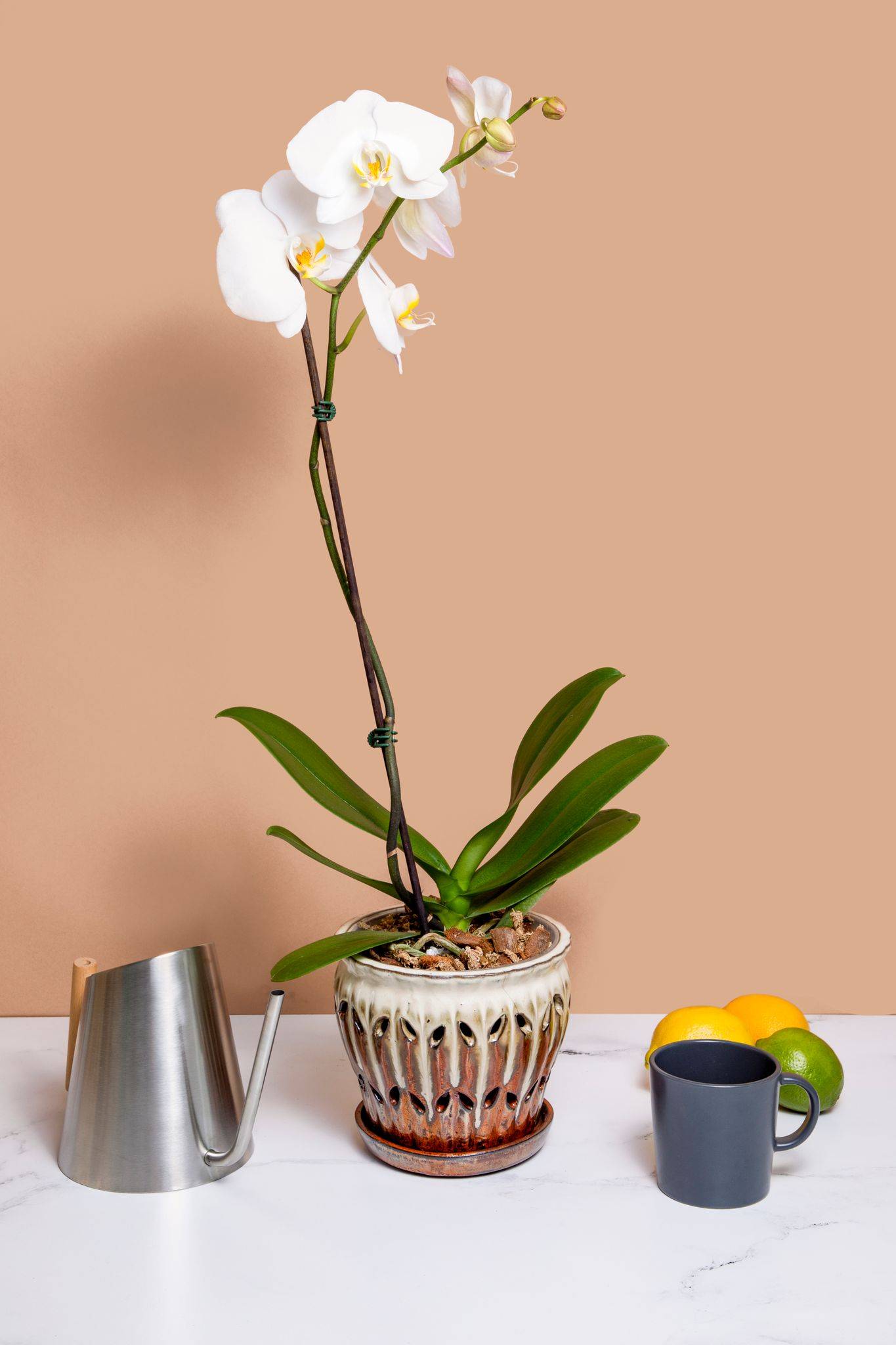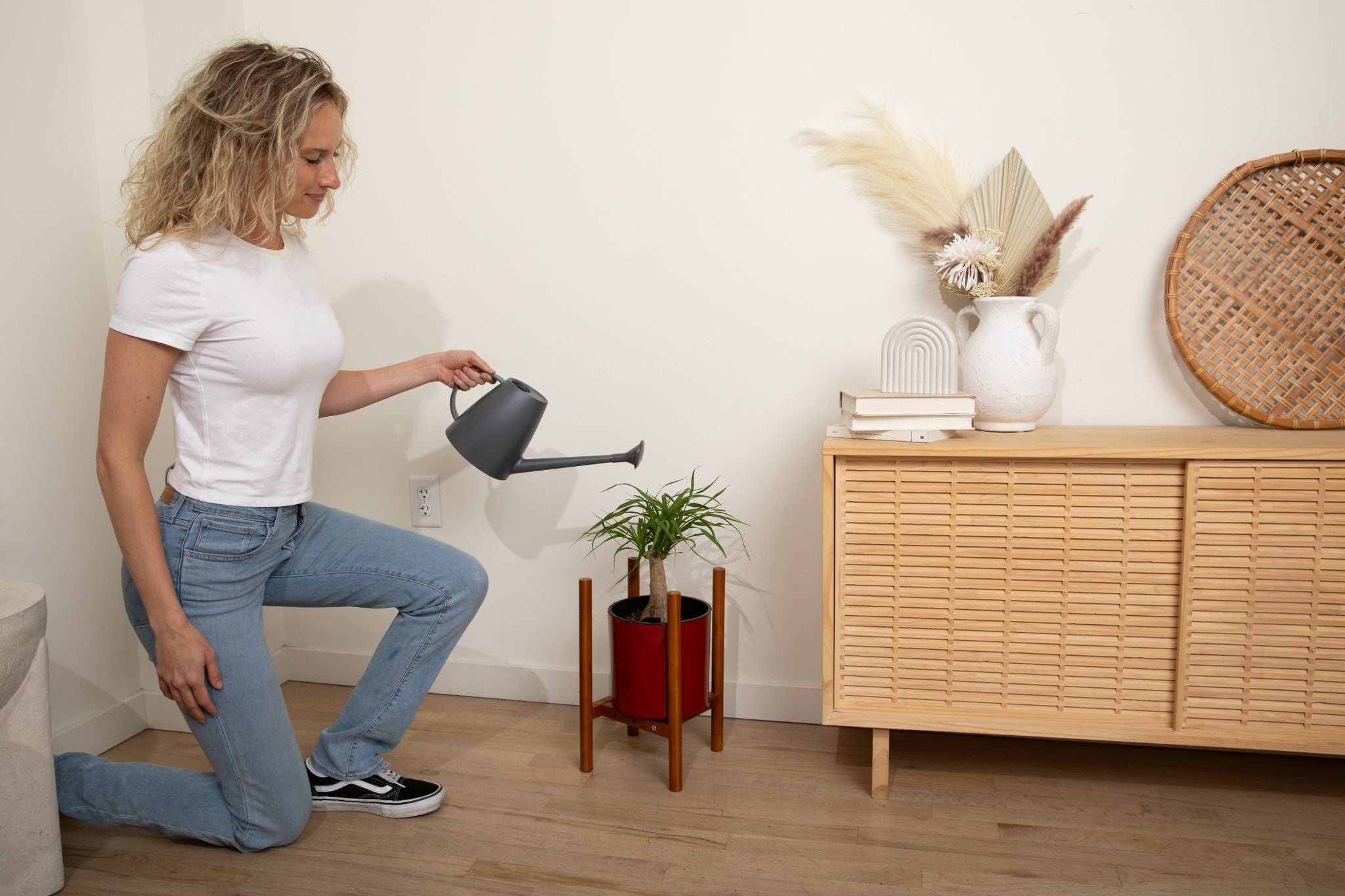How Much Should I Water My Orchid?
Phalaenopsis Orchid potted in our ceramic pot
Shop the look
It is often the case that people accidentally over-water their orchids and do them harm while trying to do what they think is best. While each growing environment is unique, and watering habits vary from person to person, it is generally a good idea to water about once per 7-10 days, when the mix gets dry. Too much watering leads to root rot, crown rot and other over watering problems like fungus gnat infestations. If an orchid does not dry out over the course of 7-10 days, then it is either in too big of a pot, has media packed too tightly, the pot has insufficient drainage holes, or there is too little air circulation.
Why are my orchid roots brown and mushy?
Ironically, an orchid may appear to be begging for water on top (shriveled or wrinkled leaves) but be so damaged in the root zone that it is unable to take up the water being given. This is often a telltale sign of root rot. Roots can rot and die back when they are exposed to too much moisture on a constant basis, and old mix that can no longer allow oxygen to circulate can be a culprit. Continuing to add water to wet, old and worn out mix exacerbates the problem.
Remember, fresh mix and good pots go a long way
Fresh mix every year or so is a good way to ward off trouble, and a scheduled and disciplined watering regimen of "weekly weakly" watering with MSU FEED ME! fertilizer should keep your orchids fit and healthy. Try our new oxygen core pots to help revive plants suffering from root loss. We like to water by pouring over the top of the mix until the liquid runs through the drainage holes of the pot. Using a humidity tray under the plants makes life easier for us and for our plants because we can "water in place" without having to carry plants around and to the sink, and we have no drips and spills to mop up. The orchids benefit too, because they have a more humid environment with the liquid evaporating under their leaves. It is like a tropical environment for them!
One can determine moisture levels by learning the approximate weight of a plastic potted orchid when watered and when dry. It really is noticeable. Another approach, especially with sphagnum based mixes is to touch the top of the mix. When it feels crunchy to the touch, that is a good indicator that it is time to water. There are other techniques too, but we find the two mentioned to be quite satisfactory.
Many orchids really like to begin to get dry between watering. Unlike houseplants, they don't like to be wet all the time and they also don't like water poured over the center of the plant, the crown. If water does accumulate in the crown, it is a good idea to try and remove it by dabbing with a paper towel or similar absorbent material.
Following these simple best practices should help keep your orchids happy and healthy. With care, they can help keep you happy and healthy for a long time too!
Orchid Care Video Series
Learn how to water your orchid in our sponsored video series featuring MissOrchidGirl. Together, we've brought a free orchid care video series our wonderful customers and orchid growers everywhere! With over 20 million views and dozens of videos, we've tried to create the most comprehensive care series available. We hope everyone enjoys!


